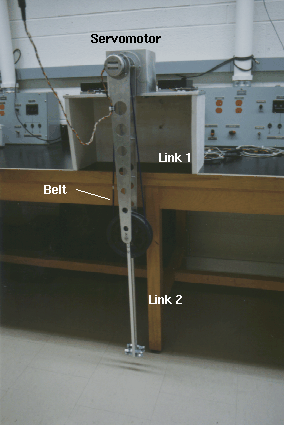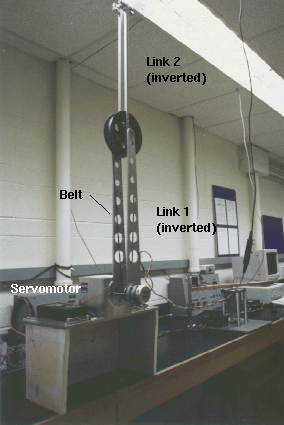The Acrobot is an underactuated double pendulum. Illustrated in the photographs below, it consists of two rigid links, connected by a hinge joint. The Acrobot can be considered a two-link robotic manipulator, except that it has only one motor which exerts torque between the links. There is no motor to provide torque between either link and the fixed base. It has dynamics similar to a gymnast on a high bar, where Link 1 is analogous to the gymnast's hands, arms and torso, Link 2 represents the legs, and Joint 2 is the gymnast's waist. Now you know how the name was coined.
The Acrobot is a test bed for nonlinear control theory. The goal of any controller is to balance the Acrobot at its unstable, inverted positions, much like the rotating inverted pendulum. Note that there are more than one inverted equilibria for the Acrobot. By applying a nonzero constant input torque, there exists a link configuration where the center of mass of both links is precisely above Joint 1. At this configuration, the Acrobot is balanced, i.e., in equilibrium. We seek controllers that balance it at all of these equilibria.
The first photo shows the Acrobot in its stable, pendant position.

The second photo shows the acrobot in its unstable, inverted position.
The controller being used to balance the Acrobot in this position is
called a pseudo-linearizing controller, which can be constructed using
spline functions. The controller is implemented on a TI 320C30
Digital Signal Processor, hosted on a 486 PC, which can be seen
on the laboratory bench in the background. The sample rate is
200Hz.

Other Acrobots have been built at the University of Illinois at Urbana-Champaign, and the University of California at Berkeley.
Scott Bortoff, bortoff@control.toronto.edu